
Q3-M/FC
Q3-M-FS-EP
Q3-M-FC-EP
MEAT/FISH SERVICE CASE
INSTALLATION & OPERATION GUIDE
/CHINO
Q3-M/FC
MEAT/FISH SERVICE CASE
Installation
& Operation
Manual
REV. 0923

/CHINO
A publication of HUSSMANN®Chino
13770 Ramona Avenue • Chino, California 91710
(909) 628-8942 FAX
(909) 590-4910
(800) 395-9229
Keep this booklet with the case at all times for future reference.
General Instructions
Table of Contents
General Instructions..................................................... 2
Cut and Plan Views ......................................................3
Installation..................................................................... 4
Location ..................................................................................... 4
Uncrating the Stand ................................................................... 4
Tighten Glass Screws................................................................ 4
Exterior Loading......................................................................... 4
Setting and Joining .................................................................... 4
Leveling ..................................................................................... 4
Q Glass Adjustment ................................................................... 5
Bumper Installation Instructions............................................... 11
Plumbing ..................................................................... 14
Waste Outlet and P-TRAP....................................................... 14
Installing Condensate Drain..................................................... 14
Refrigeration ...............................................................14
Refrigerant Type ...................................................................... 14
Piping....................................................................................... 14
Refrigeration Lines................................................................... 14
Control Settings ....................................................................... 14
Access to TEV Valves and Drain Lines ................................... 14
Electronic Expansion Valve (Optional)..................................... 14
Measuring the Operating Superheat....................................... 15
Thermostat Location ............................................................... 15
Refrigeration Data.................................................................... 15
Defrost Data............................................................................. 15
Physical Data........................................................................... 15
Q3-MC Standard Piping Diagram ..............................16
Q3 - Meat Coil Close-off Configuration ....................20
Electrical..................................................................... 21
Wiring Color Code .................................................................. 21
Electrical Circuit Identification................................................. 21
Electrical Service Receptacles (When Applicable) ................. 21
Field Wiring and Serial Plate Amperage ................................. 21
Ballast Location ...................................................................... 21
Ashrae Color Code ................................................................. 21
Finishing Touches ...................................................... 22
Bumper Installation Tips .......................................................... 22
Installing Splashguard ............................................................. 22
User Information.........................................................23
Stocking ................................................................................... 23
Important Steps ....................................................................... 23
Case Cleaning ......................................................................... 23
Cleaning Glass and Mirrors ..................................................... 24
Non-Glare Glass ...................................................................... 24
Plexiglass and Acrylic Care .................................................... 24
Cleaning.................................................................................. 24
Antistatic Coatings ................................................................... 24
Maintenance................................................................ 25
Electrical Wiring Diagrams ........................................32
Wiring Diagrams.........................................................33
Specification Sheets ..................................................53
Appendices .................................................................55
Appendix A. - Temperature Guidelines - Refrigerated ............ 55
Appendix B. - Application Recommendations - Refrigerated... 55
Appendix C. - Field Recommendations - Refrigerated ............ 55
Appendix D. - Recommendations to User - Refrigerated ........ 56
This Booklet Contains Information on:
Q3-M/FC refrigerated, service meat/fish merchandiser.
Shipping Damage
All equipment should be thoroughly examined for shipping
damage before and during unloading.
This equipment has been carefully inspected at our factory
and the carrier has assumed responsibility for safe arrival.
If damaged, either apparent or concealed, claim must be
made to the carrier.
Apparent Loss or Damage
If there is an obvious loss or damage,itmustbenotedon
the freight bill or express receipt and signed by the
carrier’s agent; otherwise, carrier may refuse claim. The
carrier will supply necessary claim forms.
Concealed Loss or Damage
When loss or damage is not apparent until after equipment
is uncrated, a claim for concealed damage is made. Make
request in writing to carrier for inspection within 15 days,
and retain all packaging. The carrier will supply inspection
report and required claim forms.
Shortages
Check your shipment for any possible shortages of
material. If a shortage should exist and is found to be the
responsibility of Hussmann Chino, notify Hussmann Chino.
If such a shortage involves the carrier, notify the carrier
immediately, and request an inspection. Hussmann Chino
will acknowledge shortages within ten days from receipt
of equipment.
Hussmann Chino Product Control
The serial number and shipping date of all equipment
has been recorded in Hussmann’s files for warranty and
replacement part purposes. All correspondence pertaining
to warranty or parts ordering must include the serial number
of each piece of equipment involved, in order to provide
the customer with the correct parts.
This equipment is to be installed
to comply with the applicable
NEC,Federal, State ,and Local
Plumbing and Construction
Code ha ving jurisdiction.
ATTENTION
INSTALLER
2

Cut and Plan Views
45 3/8"
ELECT.
DRAIN
REF.
DROP
61/8"
8"
17 1/8"
20"
14"
1 1/8" 1 1/8"
5"
CL
48"
50 1/4"
Adj. Deck
25"
10 1/8"
93/4"
29 1/2" 53/4"
45 3/8"
52"
23"
16 5/8"
Q3-MC
Service Meat - Curved Glass
with Adjustable Slanted Deck
Scale = 1/2"
25"
10 1/8" 29 1/2"
45 3/8"
93/4"
53/4"
52"
23"
16 5/8"
Q3-F C
Service Fish- Curved Glass
Scale = 1/2"
10 3/8" 29 1/8" 57/8"
16 5/8"
25"
52"
23"
(VARIABLE LENGTHS)
Q3M / Q3F Plan View
Straight Section
93/4"
Adjustable
Deck
45 3/8"
Q3-MS
Service Meat-Straight Glass
with Adjustable Slanted Glass
3

Location
The refrigerated merchandisers have been designed
for use only in air conditioned stores where temperature
and humidity are maintained at or below 75°F and 55%
relative humidity. DO NOT allow air conditioning, electric
fans, ovens, open doors or windows (etc.) to create air
currents around the merchandiser, as this will impair its
correct operation.
Product temperature should always be maintained at a
constant and proper temperature. This means that from the
time the product is received, through storage, preparation
and display, the temperature of the product must be
controlled to maximize life of the product.
Uncrating the Stand
Place the fixture as close to its permanent position as
possible. Keep in place, attached case until ready to set/bolt
to adjoining case.
Tighten Glass Screws
Tighten screws along clamshell located on the underside
of glass before placing unit into operation.
Exterior Loading
These models have not been structurally designed to
support excessive external loading. Do not walk on their
tops; This could cause serious personal injury and damage
to the fixture.
Setting and Joining
The sectional construction of these models enable them
to be joined in line to give the effect of one continuous
display.
An Alignment pin kit is supplied with every case and must
be used in alignment.
Leveling
IMPORTANT! IT IS IMPERATIVE THAT CASES BE
LEVELED FROM FRONT TO BACK AND SIDE TO SIDE
PRIOR TO JOINING. A LEVEL CASE IS NECESSARY
TO INSURE PROPER OPERATION, WATER DRAINAGE,
GLASS ALIGNMENT, AND OPERATION OF THE HINGES
SUPPORTING THE GLASS. LEVELING THE CASE
CORRECTLY WILL SOLVE ALL HINGE OPERATION
AND GLASS ALIGNMENT PROBLEMS.
NOTE: A. To avoid removing concrete flooring, begin lineup
leveling from the highest point of the store floor.
B. When wedges are involved in a lineup, set them first.
All cases were leveled and joined prior to shipment to
insure the closest possible fit when cases are joined in the
field. When joining, use a carpenters level and adjust legs
accordingly. The legs on the Q3-M/FC are adjustable and
do not require shims. Simply screw the leg up or down to
adjust height.
Installation
1. Using case blueprints, measure off and mark on the
floor the exact dimensions of where the cases will
sit. Snap chalk line for front and back positions of
base rail or pedestal. Mark the location of each joint
front and back. Find the highest point throughout the
lineup. FLOORS ARE NORMALLY NOT LEVEL!
Determine the highest point of the floor; cases
will be set off this point. All cases in the entire
lineup must be brought up to the highest level of the
case sitting at the highest point in the lineup. This
may be done a few different ways.
a) Walk the floor looking for any mounds or dips.
b)Useastringlevel.
c) Use a transit.
If a wedge is used in the middle of a lineup, the
wedge must be set on the highest point on the floor
FIRST, with the rest if the lineup being leveled from
it. The Q3-M/FC case has adjustable legs to allow
for leveling.
2. Set first case over the highest part of the floor and
adjust legs so that case is level. Remove side and
back leg braces after case is set and joined.
3. Set second case within one foot (1') of the first case,
and remove leg skids. Keep the supports along the
length of the case and far end of case. Level case to
the first using the instructions in step one.
4. Apply masking tape 1/8" in from end of case on
inside and outside rear mullion and body work on
both cases to be joined.
5. Apply liberal bead of case joint sealant (butyl) to first
case. Sealant area is shown using a dotted line in
illustration in Step 8. Apply heavy amount to cover
entire shaded area.
DO NOT USE PERMAGUM!
It is the contractor’s responsibility to install
case(s) according to local construction and
health codes
6. Slide second case up to first case snugly. Then
level second case to the first case so glass front,
bumper and top are flush.
CAUTION
Do not use bolts to pull cases together.
4

7. To compress butyl at joint, use two Jurgenson wood
clamps. Make sure case is level from front to back
and side to side on inside bulkheads at joint.
8. Attach sections together via the bolts pictured in the
illustration below.
9. Apply bead of butyl to top of bulk heads and slip on
stainless steel bulkhead cap. Also apply silicone to
seam between joints.
10. Use finger to smooth silicone as thin as possible at
masking tape on inside and outside of rear mullion
(apply additional silicone if necessary). Remove
tape applied on line #4.
11. Remove front, back and end shipping braces.
Installation (Cont'd)
LINE- UP PLATE
(INSERT INTO ALUMINUM PROFILE)
CASE BOLTING
USE 1/4" 20 X 1 1/2" SCREW AT TOP
LINE-UP PIN
(INSERT INTO OUTER 1/2" HOLE)
CASE BOLTING (3/8" HOLE)
ACCESS BEHIND RACE WAY COVERS
LINE-UP PLATE
(INSERT INTO VERTICAL SLOT)
FRONT BODY PANEL REMOVED
FOR ACCESS TO FRONT CASE BOLTING
Line Up Tab
Line Up Plate
Q Glass Adjustment
Proper adjustment of the side-to-side position on the
glass clamp on Vieler Streamline hardware such as used
on Hussmann Q series service cases is critical to proper
operation of the glass hardware. Failure to properly adjust
the glass clamp can result in failure of the hardware and
possible injury to personnel.
When setting or repairing cases, the glass clamp is
frequently adjusted from side to side once the cases are
set in order to control glass gaps or compensate for poorly
installedcaselineups.Duetotheuniquedesignofthis
type of hardware, using practices common to other types
of hardware can result in the above failures.
Step 1: Level Case
The canopy hardware and glass gaps are set at the factory
for proper fit with the Cases Square and level. Before
attempting to do any adjustment of the canopy hardware,
ensure that the cases are set square and level. Additionally,
the adjoining cases must be pulled together tightly.
To adjust the front glass please follow these steps
Before you start any adjustments make sure the cases are
level, Front to Back and side to side
5

Step # 2
To level the cases remove the front and rear close-offs, You
can adjust the Height by turning the base leg adjusters
When you turn the leg adjuster clock-wise the case will
go up.
When you turn the leg adjuster counter clock-wise the
case will go down.
IMPORTANT: Attempting to compensate for poor
installation practices by manipulating the canopy
hardware will result in unsatisfactory workmanship
and possibly cause hardware failure and/or injury.
Step 3: Adjusting Glass Height
After the cases are set and level, rear covers must be
removed to access the glass height adjusters
Adjuster
screw
Make sure
these bolts at
the bottom
are tight
Loosen the two lock screws on the side (do not remove)
To properly adjust the height of the glass requires that both
hinge arms of each section of glass be loosened before
attempting to change the glass position.
Turning the bolt clock-wise, the front glass will go down.
Turning the bolt counter clock-wise, the front glass will
go up.
Installation (Cont'd)
Some cases have wrapping boards installed, the wrapping
boards need to be removed to be able to remove the small
rear covers. Unhook at K-99 bracket.
Remove the small rear covers under each rear canopy arm
to access the arm adjusters.
Step 4:
6

Glass Height should be centered
on “V” glass seal
Glass must be parallel to ledge when viewed from front.
IMPORTANT: Attempting to compensate for poor installation practices by manipulating the canopy hardware
will result in unsatisfactory workmanship and possibly cause hardware failure and/or injury.
Step 5: Glass Side to Side Adjustment
The glass gaps can be slightly optimized by moving the glass and glass clamp assembly side to side. This should
be done as the final adjustment only after the glass/canopy height of the cases are set and leveled to each other. The
canopy hardware on adjoining Q Series cases should be screwed together with the ¼”-20 THD screws included with
the cases. There are threaded holes provided in the stationary portion of the top hardware for this purpose.
Installation (Cont'd)
After all the glass height has been adjusted, go back and tighten all the lock screws.
7

To properly adjust the glass gaps requires that both hinge arms of each section of glass be loosened before
attempting to change the glass position.
To shift the glass side to side or front to back at the glass clamp open the glass and loosen the TORX T-15 screw.
To shift the glass side to side
or front to back at the glass
clamp
#1 Open the glass and loosen
the Torx T-15 screw
# 2 Loosen the #10 MM bolt on both
sides of the glass as needed
Installation (Cont'd)
To adjust glass to glass gaps see the following.
8

Torque Specs:
IMPORTANT: Attempting to change the glass position by loosening only one side or by forcing the clamp
sideways will result in damaging the hardware and its eventual failure. Loosening the hinge arms requires
loosening the attachment screws and setscrews on both hinge arms on the section of glass.
IMPORTANT: It is critical to use the proper size Torx or Hex wrench for the fasteners to avoid stripping the
fasteners.
Installation (Cont'd)
9

Installation (Cont'd)
Loosen the fasteners only as needed to allow the glass clamp to slip to the desired position.
Reposition the glass and glass clamp assembly as needed and verify its position by carefully closing the glass to check
clearances.
Once the glass is in the desired position, retighten the fasteners at the hinge arms with the proper wrench.
Recheck the glass position and double check that the fasteners are properly torqued.
IMPORTANT: It is critical that the hinge arm washers or bushings that fasten the hinge arms to the stationary
portion of the upper glass hardware do not have any side pressure on them. Even the slightest side pressure
will result in the failure of the hardware. If the retaining clips or hinge arm washers or bushings at each hinge
arm have any side pressure it is necessary to repeat the adjustment procedure.
When properly adjusted, the hinge arm washers or bushings will have a slight side-to-side free play.
10

Installation (Cont'd)
Bumper Installation Instructions
Step 1: Make sure the aluminum channel and end caps
are installed.
Step 2: Use silicone lubricant to help the
bumper slide into the channel.
Step 3: Starting on one end: while inserting the bumper,
push it up against the end cap to prevent
the bumper from shrinking after installation
(when it gets cold).
Step 4: As you insert the bumper into the channel with
one hand, pull the bumper toward you with
the other to open the inside lips. Slowly
apply pressure by rolling the bumper into
the track.
11

Installation (Cont'd)
Boston 2000 Eco Series
Boston Series 2000
NOTE: Flexible top: Over cut vinyl 1/8" for every 4' section for
the flexible top to ensure a proper fit.
NOTE: Rigid Top: Do not over cut.
1. Attach the base and end/corner cap to the desired
surface by inserting #8 pan head screws through the
pre-slotted holes in both the end cap and the base.
Insert screws through the two holes of end cap and
tighten.
2a. Flexible Top: Butt end of the vinyl top against
end/corner cap. While applying pressure, bend
back vinyl top so that vinyl legs are positioned within
the base grooves. Roll vinyl top over full length of
base, then tap with rubber mallet to ensure vinyl is
securely locked into the base.
2b. Rigid Top: Snap the Rigid Top over the Rigid Base.
3. If necessary wipe clean with any household cleaning
product.
Helpful Hints:
●For best results, before cutting, install a scrap piece
of base into vinyl top to achieve a clean cut.
●Set the uncoiled flexible vinyl at room temperature
24 hours prior to installation.
●Lubricate the inside of the vinyl with soapy water or
silicone before installing.
●Over cut the flexible vinyl and compression fit.
Adding the additional materials will compensate for
stretching which occurs during installation.
1. Attach the base and end/corner cap to the desired
surface by inserting #8 pan head screws through the
pre-slotted holes in both the end cap and the base.
Insert screws through the two holes of end cap and
tighten.
2a. Flexible Top: Butt end of the vinyl top against
end/corner cap. While applying pressure, bend
back vinyl top so that vinyl legs are positioned within
the base grooves. Roll vinyl top over full length of
base, then tap with rubber mallet to ensure vinyl is
securely locked into the base.
2b. Rigid Top: Snap the Rigid Top over the Rigid Base.
3. If necessary wipe clean with any household
cleaning product.
Helpful Hints:
●For best results, before cutting, install a scrap piece
of base into vinyl top to achieve a clean cut.
●Set the uncoiled flexible vinyl at room temperature
24 hours prior to installation.
●Lubricate the inside of the vinyl with soapy water or
silicone before installing.
●Over cut the flexible vinyl and compression fit.
Adding the additional materials will compensate for
stretching which occurs during installation.
12

Installation (Cont'd)
2b. Rigid Top: Snap the Rigid Top over the Rigid Base.
Boston 1000 Series
NOTE: Flexible top: Over cut vinyl 1/8" for every 4' section for
the flexible top to ensure a proper fit.
NOTE: Rigid Top: Do not over cut.
Installation
1. Attach the base and end/corner cap to the desired
surface by inserting #8 pan head screws through the
pre-slotted holes in both the end cap and the base.
Insert screws through the two holes of end cap and
tighten.
2a. Flexible Top: Butt end of the vinyl top against
end/corner cap. While applying pressure, bend
back vinyl top so that vinyl legs are positioned within
the base grooves. Roll vinyl top over full length of
base, then tap with rubber mallet to ensure vinyl is
securely locked into the base.
3. If necessary wipe clean with any household
cleaning product.
Helpful Hints:
●For best results, before cutting, install a scrap piece
of base into vinyl top to achieve a clean cut.
●Set the uncoiled flexible vinyl at room temperature
24 hours prior to installation.
●Lubricate the inside of the vinyl with soapy water or
silicone before installing.
●Over cut the flexible vinyl and compression fit.
Adding the additional materials will compensate for
stretching which occurs during installation.
13

Plumbing
Waste Outlet and P-TRAP
The waste outlet is located off the center of the case on
one side allowing drip piping to be run lengthwise under
the fixture.
P-traps must be installed at the base of all refrigerated
cases. The 1 ½” P-TRAP and threaded adapter must
be installed to prevent air leakage and insect entrance
into the fixture.
Installing Condensate Drain
Poorly or improperly installed condensate drains can
seriously interfere with the operation of this refrigerator, and
result in costly maintenance and product losses. Please
follow the recommendations listed below when installing
condensate drains to insure a proper installation:
1. Never use pipe for condensate drains smaller
than the nominal diameter of the pipe or P-TRAP
supplied with the case.
2. When connecting condensate drains, the P-TRAP
must be used as part of the condensate drain
to prevent air leakage or insect entrance. Store
plumbing system floor drains should be at least 14”
off the center of the case to allow use of the P-TRAP
pipe section. Never use two water seals in series in
any one line. Double P-TRAPS in series will cause a
lock and prevent draining.
3. Always provide as much down hill slope (“fall”) as
possible; 1/8” per foot is the preferred minimum.
PVC pipe, when used, must be supported to
maintain the 1/8” pitch and to prevent warping.
4. Avoid long runs of condensate drains. Long runs
make it impossible to provide the “fall” necessary for
good drainage.
5. Provide a suitable air break between the flood rim of
the floor drain and outlet of condensate drain. 1” is
ideal.
6. Prevent condensate drains from freezing:
a. Do not install condensate drains in contact with
non-insulated suction lines. Suction lines should
be insulated with a non-absorbent insulation
material such as Armstrong’s Armaflex.
b. Where condensate drains are located in dead
air spaces (between refrigerators or between a
refrigerator and a wall), provide means to prevent
freezing. The water seal should be insulated to
prevent condensation.
Refrigerant Type
Check the serial plate on the case for information.
Piping
The refrigerant line outlets are located under the case.
Locate first the electrical box, the outlets are then on the
same side of the case, but at the opposite end. Insulate
suction lines to prevent condensation drippage.
Refrigeration Lines
Liquid
3/8” O.D.
Suction
5/8” O.D.
Refrigeration
Control Settings
NOTE: The standard coil is piped at 5/8” (suction); however,
the store tie-in may vary depending on the number of
coils and the draw the case has. Depending on the case
setup, the connecting point in the store may be 5/8”, 7/8”,
or 11/8”. Refer to the particular case you are hooking up.
Refrigerant lines should be sized as shown on the
refrigeration legend furnished by the store.
Oil traps must be installed at the base of all suction
line vertical risers on refrigerated cases.
Pressure drop canrobthesystemofcapacity.Tokeepthe
pressure drop to a minimum, keep refrigerant line run as
short as possible, using the minimum number of elbows.
Where elbows are required, use long radius elbows only.
See Q3-M/FC technical data sheet for the appropriate
settings for your merchandiser. Maintain these parameters
to achieve near constant product temperatures. Product
temperature should be measured first thing in the
morning, after having been refrigerated overnight. For all
multiplexing, defrost should be time terminated. Defrost
times should be as directed in the Q3-M/FC technical
data sheet. The number of defrosts per day should never
change. The duration of the defrost cycle may be adjusted
to meet conditions present at your location.
Access to TEV Valves and Drain Lines
Mechanical - Remove product from case. Remove
pans. TX valve (mechanical only) and drain are located
under the pans within the case.
Electronic - The Electronic Expansion valve master and
slave cylinder(s) are located within the electrical access
panel(s) in the rear of case. Unscrew the rear panels with
Phillips screwdriver.
Electronic Expansion Valve (Optional)
A wide variety of electronic expansion valves and case
controllers can be utilized. Please refer to EEV and
controller manufacturers information sheet. Sensors for
electronic expansion valves will be installed on the coil inlet,
coil outlet, and in the discharge air. (Some supermarkets
require a 4th sensor in the return air). Case controllers will
be located in the electrical raceway or under the case.
14

Expansion Valve Adjustment
Expansion valves must be adjusted to fully feed the
evaporator. Before attempting any adjustments, make
sure the evaporator is either clear or very lightly covered
with frost, and that the fixture is within 10°F of its expected
operating temperature.
After case has been brought to running
temperature verify screws along glass clamp
aluminium extrusion are tight.
ATTENTION
INSTALLER
Measuring the Operating Superheat
1. Determine the suction pressure with an accurate
pressure gauge at the evaporator outlet.
2. From a refrigerant pressure temperature chart,
determine the saturation temperature at the
observed suction pressure.
3. Measure the temperature of the suction gas at the
thermostatic remote bulb location.
4. Subtract the saturation temperature obtained in step
No. 2 from the temperature measured in step No. 3.
5. The difference is superheat.
6. Set the superheat for 5°F - 7°F.
Thermostat Location
Thermostats are located in the electrical section; behind
the rear panel, on the right-hand side of the case (facing
the back of the case).
Refrigeration
15

Q3-MC Standard Piping Diagram
GRAVITY COIL
SPECIAL NOTES:
The digital
temperature probe
is to be located in
the center of case,
approximately half
way between the
display deck and
gravity coil. It
must NOT be in
gravity coil air
stream.Ifthe
probe is in the
gravity coil air
stream, the probe
will read a low
temperature and the
user will operate the
thermostat control
incorrectly. FRONT OF CASE
CAP TUBE
60”.071DIA
OPTIONAL
REFRIGERATED
SHELF
SERPENTINE COIL ASSY USED
ON Q3-MC. OMITTED ON Q3-FC
REV: F
10/26/12 Q3-MC/FC PIPING DIAGRAM
4’ 5’ LENGTHS
1/2 CU
1/4 CU
3/8 CU
5/8 CU
7/8 CU
16

GRAVITY COIL
SPECIAL NOTES:
The digital
temperature probe
is to be located in
the center of case,
approximately half
way between the
display deck and
gravity coil. It
must NOT be in
gravity coil air
stream.Ifthe
probe is in the
gravity coil air
stream, the probe
will read a low
temperature and the
user will operate the
thermostat control
incorrectly. FRONT OF CASE
CAP TUBE
60”.071DIA
OPTIONAL
REFRIGERATED
SHELF
SERPENTINE COIL ASSY USED
ON Q3-MC. OMITTED ON Q3-FC
REV: F
10/26/12 Q3-MC/FC PIPING DIAGRAM
6’ 8’ 10’ 12’ LENGTHS
1/2 CU
1/4 CU
3/8 CU
5/8 CU
7/8 CU
17

18

19

Q3 - Meat Coil Close-off Configuration
20
Page is loading ...
Page is loading ...
Page is loading ...
Page is loading ...
Page is loading ...
Page is loading ...
Page is loading ...
Page is loading ...
Page is loading ...
Page is loading ...
Page is loading ...
Page is loading ...
Page is loading ...
Page is loading ...
Page is loading ...
Page is loading ...
Page is loading ...
Page is loading ...
Page is loading ...
Page is loading ...
Page is loading ...
Page is loading ...
Page is loading ...
Page is loading ...
Page is loading ...
Page is loading ...
Page is loading ...
Page is loading ...
Page is loading ...
Page is loading ...
Page is loading ...
Page is loading ...
Page is loading ...
Page is loading ...
Page is loading ...
Page is loading ...
Page is loading ...
Page is loading ...
Page is loading ...
-
 1
1
-
 2
2
-
 3
3
-
 4
4
-
 5
5
-
 6
6
-
 7
7
-
 8
8
-
 9
9
-
 10
10
-
 11
11
-
 12
12
-
 13
13
-
 14
14
-
 15
15
-
 16
16
-
 17
17
-
 18
18
-
 19
19
-
 20
20
-
 21
21
-
 22
22
-
 23
23
-
 24
24
-
 25
25
-
 26
26
-
 27
27
-
 28
28
-
 29
29
-
 30
30
-
 31
31
-
 32
32
-
 33
33
-
 34
34
-
 35
35
-
 36
36
-
 37
37
-
 38
38
-
 39
39
-
 40
40
-
 41
41
-
 42
42
-
 43
43
-
 44
44
-
 45
45
-
 46
46
-
 47
47
-
 48
48
-
 49
49
-
 50
50
-
 51
51
-
 52
52
-
 53
53
-
 54
54
-
 55
55
-
 56
56
-
 57
57
-
 58
58
-
 59
59
hussman Q3-M-FC-EP Installation guide
- Type
- Installation guide
- This manual is also suitable for
Ask a question and I''ll find the answer in the document
Finding information in a document is now easier with AI
Related papers
-
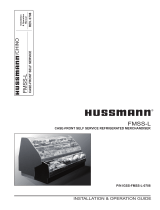 Hussmann Refrigerator FMSS-L User manual
Hussmann Refrigerator FMSS-L User manual
-
hussman IGFP-R3 User manual
-
hussman Q3-BS Installation guide
-
hussman Q1-SSN Installation guide
-
hussman Q3-SP Installation guide
-
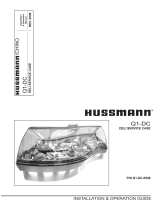 Hussmann Q1-DC Wedge User manual
Hussmann Q1-DC Wedge User manual
-
hussman CR3HV-M-F-EP Installation guide
-
hussman DBRP-03 Owner's manual
-
hussman CR3HV-NB Installation guide
-
hussman Refrigerator FMSS-L User manual
Other documents
-
Emerson Liebert GXT3 Series User manual
-
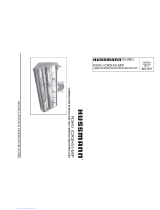 Hussmann Chino CR3HV-F Installation & Operation Manual
Hussmann Chino CR3HV-F Installation & Operation Manual
-
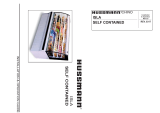 Hussmann ISLA IM-05-I4-S Installation & Operation Manua
Hussmann ISLA IM-05-I4-S Installation & Operation Manua
-
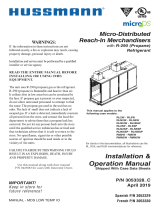 Hussmann RM2W Installation & Operation Manual
Hussmann RM2W Installation & Operation Manual
-
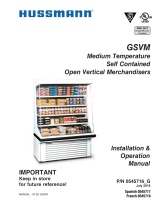 Hussmann GSVM Installation & Operation Manual
Hussmann GSVM Installation & Operation Manual
-
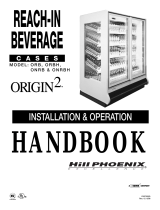 Hill Phoenix ORB User manual
Hill Phoenix ORB User manual
-
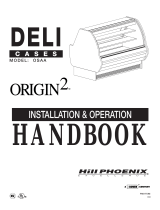 Hill Phoenix OSAA User manual
Hill Phoenix OSAA User manual
-
 Hussmann HGM-1BS Installation guide
Hussmann HGM-1BS Installation guide
-
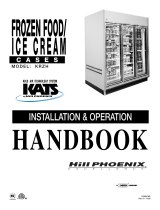 Hill Phoenix KRZH User manual
Hill Phoenix KRZH User manual
-
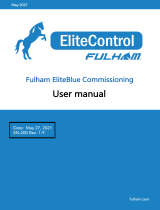 Fulham CTBRCB03JM03-PC User manual
Fulham CTBRCB03JM03-PC User manual





































































